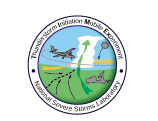

September 14, 1998
Severe Local Storms Conference, Minneapolis, MN
Meeting Introduction
Welcome and Statement of Intent
- share info from this summer's subVORTEX experience and water vapor workshop
- develop consensus on a timeline for experiment phases
Logistics lessons from subVORTEX RFD relative to TIMEx
- fast moving boundaries extremely difficult to observe from the ground;
- better communications essential , both between teams and with data sources;
- need to improve ability to coordinate multiple mobile platforms;
- easy to find null cases of convective initiation, very difficult to find initiation;
- expect to spend 12000 miles to document 6 boundaries;
- no substitute for the human eye in detecting initiation (30 min. faster).
Good News from the NCAR-NOAA Lower Tropospheric Water Vapor Workshop
- share draft overheads summarizing equipment from the workshop, including points for DIAL vs. Raman lidar, potential of GPS tomographic applications, etc. (see Weckwerth et al paper in BAMS);
- summarize points relative to TIMEx:
- have two ground-mobile systems that can produce integrated water vapor (AERI and microwave radiometers, zenith pointing);
- mobile radars (DOWS, Texas A&M development, Knupp's 915 MHz profiler, others?)
- have several options on airborne zenith or nadir pointing DIAL systems; possibility of developing scanning capability;
- "transportable" Raman lidar
Bad News from Workshop
- scanning DIAL some years away, development efforts need political/scientific justification and pressure;
- new systems (including radars!!) need field test opportunities to harden systems and define actual capabilities, and we need to learn how to use them effectively in a mobile sense.
Our Current Thinking
- start small, with simple experiment designs;
- develop expertise to support both larger and better field ops;
- improve/tighten hypotheses with experience over series of experiments.
Strawman Timeline
2000: TIMEx-1
Systems field tests and demonstrations
DCVZ, Colorado (_very_ slow moving boundaries)
Primary Systems:
Mobile Mesonet UAVs (development/demonstration)
ELDORA (or analog)
Sounding systems
Any/all DIAL systems (development/demonstration)
Mobile Doppler (development/demonstration)PIs: Atkins, Blanchard, Crook, Kingsmill, Wakimoto et al, Weckworth & Wilson, Ziegler, ?
Primary objectives:
- determine relative spatial-temporal scales and their interactions;
- explore 4-D mapping of water vapor;
- develop logistics of system deployments.
Analysis duration: 2+ years
2002: TIMEx-2
LLJ/warm front objectives (hopefully larger scale structures)
Southern Great Plains
Primary Systems:
Aircraft (tbd)
Sounding systems
Mesonets
WSR-88D network
Profiler network
Satellite obs
GPS mesoscale water vapor profiles (?)
Other remote sensing systems (depending on state of development and experiment requirements)PIs: Bresch, Koch, Roberts & Weaver, Ziegler, ?
Primary objectives: per hypotheses
Analysis duration: 2+ years
2004: TIMEx-3
Small scale boundaries
West Texas (?)
Primary Systems:
Airborne DIAL systems
ELDORA (or analog)
Mobile Dopplers
UAVs
Mobile Mesonet
Sounding systemsPIs: Atkins, Blanchard, Crook, Kingsmill, Wakimoto et al, Weckworth & Wilson, Ziegler, ?
Primary objectives: per hypotheses.
Analysis duration: 2+ years
2006: TIMEx-4
Outflow boundary studies
Midwest
2008: TIMEx-5
Possible subjects:
Lee mountain convergence zones
eastern US initiation mechanisms
DISCUSSION
There did not appear to be much representation of the PIs interested in initiation due to elevated sources, and most of the discussion was related to observations of surface-based initiation.
Concerns were raised about possible restrictions on aircraft operations near the DCVZ (eastern Colorado) due to the proximity of DIA and other airports. There were also objections raised by some of the PIs (Weisman, Bluestein) to any proposed operations in eastern Colorado. There seemed to be a lack of appreciation concerning both the logistical degree of difficulty inherent in surface-based mobile operations, and the need to define the spatial and temporal scale requirements of existing surface-based initiation hypotheses (points of the DCVZ effort).
The potential utility of Doppler lidar systems was mentioned, with a suggestion that possible mobile systems should be investigated.
The possible utility and relatively easy addition of the McGill “refractivity systems” to WSR-88D radars was brought forward, and suggested for future TIMEx initiatives.
Participants from the NWS/SPC said there there are lots of boundaries visible in OK Mesonet and WSR-88D data, faster moving early in the season, slower later; most do NOT initiate convection. Agreed that May 15 - June 15 would be good time in northern Oklahoma for slower boundaries.
Strong suggestion (Weisman, Bluestein) for someone to do climatologies on initiation (including drylines, fronts, “visible” boundaries), region by region. After discussion of the extent and nature of such inquiries, no one volunteered to take this forward.
A representative from NCAR (Dave Carlson) expressed an opinion that NCAR could produce a ground-based, transportable, scanning water vapor DIAL in a few years; he also stated that he would prefer to validate such a system against the ARM/CART Raman lidar and other observing systems in northern Oklahoma, including instrumented aircraft.
There was an strong consensus that all critical observing systems (especially new systems for observing 4-D water vapor and winds) need to be rigorously field tested before being deployed in TIMEx-proper field efforts.
Proposed New Timeline
Feasibility Demonstrations (new instruments): as early as FY2000?
TIMEx - Grande: OK/KS, to test _all_ hypotheses, possibly as early as
2001?
It was acknowledged that we need to be prepared to slide the dates back
in time based on actual instrument development.